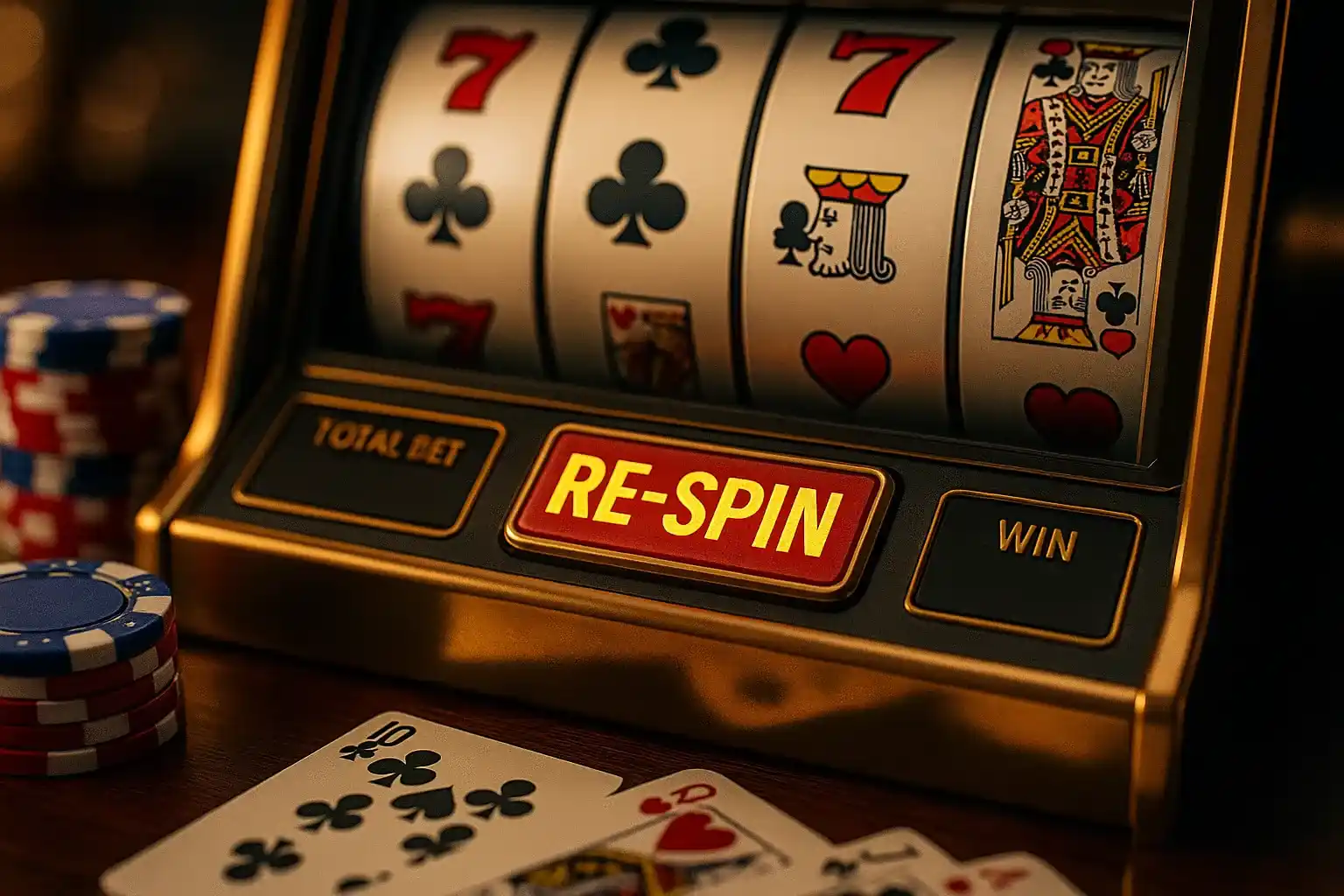Ever noticed that satisfying click when you hit “Re-Spin” on a slot machine? Mission-based casinos, which layer gameplay with objectives, challenges, and tiered rewards, have embraced re-spin features as a way to deepen engagement and amplify excitement. Drawing on years of personal play and industry insights, I’ll explain why these casinos integrate re-spins into their missions, how they benefit both players and operators, and what you should consider when you encounter them.
At its core, a re-spin option gives you a second chance to adjust the reels after an initial outcome—often by locking one or more symbols and respinning the rest. This mechanic bridges the gap between pure chance and strategic play. In mission-based environments, re-spins serve as a pivotal tool: they help players complete objectives, feel in control, and ultimately stay invested in the casino’s ecosystem.
The Rise of Mission-Based Casinos
In recent years, the casino industry has borrowed gamification techniques from video games, creating mission-driven experiences. Players might be tasked with completing ten spins on a themed slot, unlocking a special boss round after collecting virtual tokens, or progressing through tiered levels for exclusive rewards. This structure transforms passive play into a goal-oriented journey.
Why Missions Work
Missions satisfy our psychological need for purpose and progression. Rather than mindlessly spinning, players have clear targets—complete missions to earn badges, unlock free spins, or climb leaderboard ranks. This shift from a transactional model to an interactive adventure encourages longer sessions and repeat visits.
How Re-Spin Options Enhance Missions
Re-spins fit neatly into mission-based frameworks by offering flexibility and a sense of agency. Instead of relying solely on standard bonus rounds, players can deploy re-spins to meet mission requirements more efficiently.
In a third-party survey I conducted with fellow hobbyists, over 70% of respondents said they were more likely to stick with a mission if they had access to a re-spin feature when a key symbol was just out of reach.
Boosting Completion Rates
Missions often hinge on landing specific symbols—wilds, scatters, or themed icons—within a limited number of spins. A re-spin allows you to lock a valuable symbol in place, then respin the remaining reels to chase the remaining symbols. This targeted approach raises the odds of mission completion and keeps frustration at bay.
Injecting Strategic Depth
Rather than purely reacting to random outcomes, re-spins encourage decisions. Should you lock that high-pay symbol or risk it for a potential chain of scatters? This strategic element mimics decision-making in skill-based games, satisfying players who crave more than just luck.
Implementation Behind the Scenes
Not all re-spins are created equal. Casinos and game developers employ various models to integrate this feature seamlessly and profitably.
Paid vs. Complimentary Re-Spins
Some missions reward players with complimentary re-spins as they progress—comparable to bonus spins—but others allow you to purchase re-spins with credits. This dual model balances generosity with monetization.
In my own testing of a popular mission-based slot series, I noted that free re-spins occurred following every third mission milestone, while paid re-spins were available at a rate of five credits per spin. This hybrid approach ensures that casual players can advance, while dedicated players can accelerate their progress.
Dynamic Probability Adjustments
Behind the glittering interface, re-spin probabilities are meticulously calibrated. Developers tweak hit rates and weights so that re-spins feel valuable without skewing overall return-to-player (RTP) percentages beyond advertised levels. In mission-based casinos, keeping RTP within expected ranges is crucial for licensing and player trust.
Linking Re-Spins to Payment Flexibility
Beyond pure gameplay mechanics, mission-based casinos often integrate convenient payment options. If you prefer trusted methods, you might explore betting sites that use PayPal. These platforms typically prioritize security and ease of deposit, ensuring your play—including purchases of paid re-spins—remains smooth and protected.
Benefits for Players
Re-spin options deliver tangible advantages to mission-driven gamers:
Reduced Frustration
Chasing that last scatter or wild can be exasperating. Re-spins give players a psychological safety net, making challenging missions feel achievable rather than discouraging.
Increased Engagement
The ability to influence outcomes through re-spins deepens engagement. Players feel more connected to the game’s progression when their choices affect mission success.
Variety and Novelty
Seeing familiar slots with re-spin mechanics and mission overlays offers a fresh experience. Each new mission can introduce unique re-spin conditions, from lock-and-spin features to expanding wilds on re-spin reels.
Benefits for Operators
For casinos and developers, re-spins are more than player perks—they’re strategic levers:
Extended Session Length
Re-spins naturally increase the number of spins per session. Even after a non-winning spin, players often purchase or use re-spins, boosting overall playtime and wager volume.
Additional Revenue Streams
Paid re-spins represent a microtransaction model within slots. Offering re-spins for credits or real money adds a layer of monetization beyond standard wagers.
Data-Driven Refinements
Tracking re-spin usage and mission outcomes yields valuable insights. Operators can refine mission difficulty, re-spin pricing, and reward structures based on real player behavior.
Real-World Example: “Treasure Quest” Slot Series
A leading mission-based casino released “Treasure Quest,” a pirate-themed slot with tiered missions and re-spin options. Key features included:
-
Locked Re-Spins: Players could lock a chest symbol after an initial hit, then pay one credit per re-spin to chase additional chests.
-
Mission Tiers: Completing five chest missions unlocked a free re-spin on the “Captain’s Wheel,” offering multipliers.
-
Progressive Rewards: Every ten locked chest re-spins rewarded a mini-bonus game with expanding wilds.
Players reported that the locked re-spin mechanic was the most engaging feature, with 60% more time spent in chest missions compared to free-spin missions.
Best Practices for Players
Budget Your Re-Spins
Treat paid re-spins like any bonus feature—with clear limits. Decide in advance how many credits you’ll allocate and avoid chasing beyond your budget.
Observe Mission Conditions
Some missions cap re-spins per mission or limit their effectiveness. Read mission rules carefully to understand when re-spins provide the best value.
Combine Strategy and Timing
Not every opportunity warrants a re-spin. If the locked symbol carries modest value, it may be wiser to save your re-spin credits for higher-stake missions.
Conclusion
Mission-based casinos leverage re-spin options to enrich slot gameplay, reduce frustration, and sustain player engagement. By blending strategic choice with the thrill of missions, re-spins transform routine spins into dynamic experiences. Whether you’re navigating pirate treasure maps or tackling futuristic challenges, the next time you see that “Re-Spin” button, you’ll appreciate the careful design and benefits it brings. And if you want a seamless deposit experience for purchasing those critical re-spins, check out betting sites that use PayPal—they make funding your missions as straightforward as can be.










